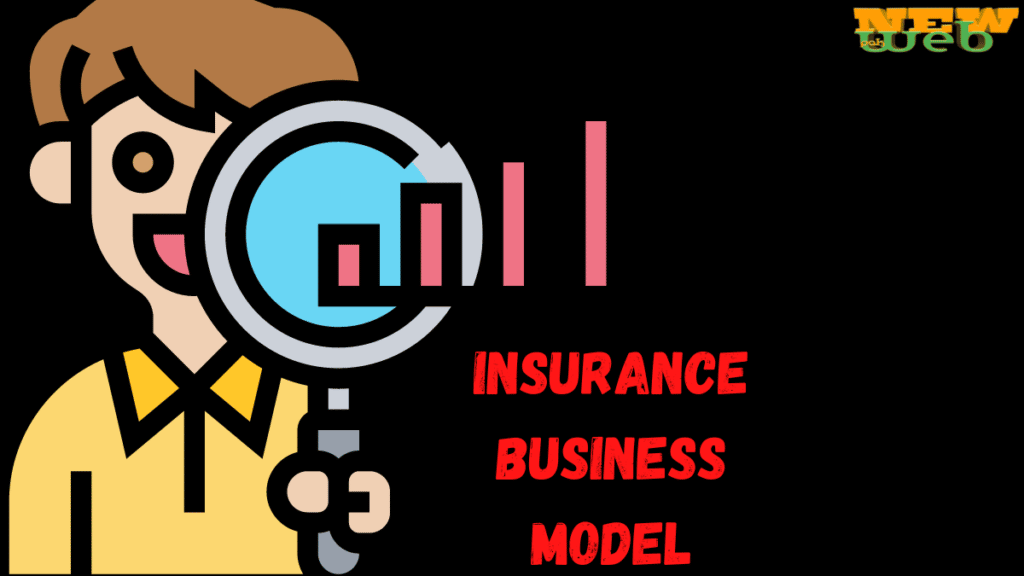Insurance business model – Insurance companies make money by taking on and spreading the risk. The basic insurance model combines the risks of different payers and spreads them out over a larger portfolio. Most insurance companies make money in two ways: they charge premiums for insurance coverage and then put those premiums into other assets that earn interest. Insurance companies try to market themselves well and keep administrative costs as low as possible. It is just like any other private business.

Pricing and Taking Risk
Insurance business model – health insurance companies, property insurance companies, and financial guarantors have different ways of making money. The first thing an insurer has to do is put a price on risk and charge a premium for taking it on.
Let’s say the insurance company is selling a policy with a possible payout of $100,000. It needs to figure out how likely a potential buyer will make the conditional payment and how long that risk will last based on how long the policy is.
This is why underwriting insurance is so important. Suppose the insurance company didn’t do good underwriting. It would charge some customers too much and others too little for taking risks. This could make it too expensive for the customers who pose the least risk, which could cause rates to go up even more. If a company prices its risk correctly, it should make more money from premiums than it spends on conditional payouts.
In a way, insurance claims are the real product of an insurance company. When a customer makes a claim, the company has to process it, make sure it’s right, and send payment. This process of adjusting is needed to weed out false claims and lower the risk of loss for the company.
ALSO READ: Individual Health Insurance – Can You buy your health Insurance in the USA as an Individual in 2022
Interest income and income
insurance business model – The insurance company gets $1,000,000 in premiums for its policies. It could keep the money in cash or a savings account. But that wouldn’t be very useful: At the very least, those savings will be subject to inflation risk. Instead, the company can put its money into safe, short-term assets. This gives the company more money in the form of interest while it waits for possible payouts. This instrument includes things like Treasury bonds, high-quality corporate bonds, and cash equivalents that pay interest.
Reinsurance
Reinsurance is a way for some companies to lower their risk. It is insurance that insurance companies buy to protect themselves from having to pay out too much in claims because they have too much risk. Reinsurance is a key part of how insurance companies stay in business and avoid going bankrupt because of payouts. Regulators require it for certain sizes and types of companies.
For example, an insurance company might sell too much hurricane insurance if its models show that a certain area has a low chance of being hit by a hurricane. If something impossible happened and a hurricane hit that area, the insurance company could lose a lot of money. Insurance companies could go out of business whenever a natural disaster happens without reinsurance to take away some risks.
Unless the policy is re-insured, regulators say that an insurance company can only sell a policy with a cap of 10% of its value. So, reinsurance lets insurance companies be more aggressive when trying to get a bigger market share because they can transfer risks. Also, reinsurance reveals insurance companies’ natural ups and downs, which can have big changes in profits and losses.
It’s kind of like arbitrage for a lot of insurance companies. They charge more for insurance to each customer, but when they re-insure many policies at once, the rates go down.
Getting to Know Insurers
Reinsurance makes the whole insurance business better for investors by smoothing out the ups and downs of the business.
Like any other service, insurance companies are judged on how well they make money, how fast they expect to grow, how much they pay out, and how risky they are. But some problems are unique to the field. Since insurance companies don’t buy fixed assets, there isn’t much depreciation, and very little money is spent on capital. Also, it’s hard to figure out the insurer’s working capital because there are no standard accounts for working capital. Analysts don’t use firm and enterprise values as metrics. Instead, they focus on equity metrics like price-to-earnings (P/E) and price-to-book (P/B) ratios. Analysts use ratio analysis to evaluate insurance companies by figuring out insurance-specific ratios.
The P/E ratio is usually higher for insurance companies that are expected to grow quickly. Pay out a lot of money, and have low risk. In the same way, P/B is higher for insurance companies that are expected to grow their earnings quickly, have a low-risk profile, pay out a lot of money, and have a high return on equity. Keeping everything else the same, the biggest factor in the P/B ratio is the return on equity.
Insurance business model – Analysts have to deal with more things that make it harder to compare P/E and P/B ratios across the insurance sector. Insurance companies estimate how much it will cost them to pay out claims in the future. If the insurance company estimates these provisions too conservatively or aggressively, the P/E and P/B ratios may be too high or too low.
The level of diversity also makes it hard to compare different insurance companies. It is common for an insurance company to offer more than one type of insurance, such as life, property, and casualty insurance. Insurance companies face different risks and returns depending on how diversified they are. This means that their P/E and P/B ratios vary from one sector to the next.
ALSO READ: How much does Health Insurance Cost without a subsidy?
